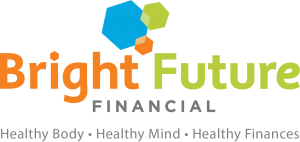Australia’s housing affordability crisis puts homeownership out of reach for most young Australians. And, it seems to be their obsession with the humble avo toast breakfast combo that’s holding them back from reaching their home-owning dreams. Clearly.
But, my outlook on life is that it should be enjoyed. So, in this blog, I’ll share with you my tips to better manage your money so you can save for a house and still enjoy your smashed avo toast.
 Better Cash Flow Management
Better Cash Flow Management
Life really isn’t about sacrificing all the fun to get ahead – you still need to enjoy yourself too. Before embarking on your savings plan, it’s important you start with the basics and build yourself a solid base. You can do this by introducing 5 financial buckets to your money management system.
Build an emergency fund
First thing’s first. You need to build your emergency fund – start with around $2,000 – $3,000. If you don’t have it spare, spring clean your house and sell your unwanted items on eBay. Or, get a part-time job to boost your earnings. This is your first and very important step.
After you’ve established your emergency fund, you will split each pay into 4 accounts.
Create an Avocado Fund
Yep – you guessed it. The Avo Fund is your play account – it enables you to nurture yourself so you still enjoy life. Whether it’s a weekend getaway, fancy wine, or coffee served in avo shells every morning on your way to work – have fun with it. Besides, heading out for coffee and breakfast each week also allows you to support your local community (that ain’t all bad!).
Each pay, transfer 10% of your earnings into your Avo Fund.
Create a Happiness Fund
Not to be mistaken for your everyday avocado-esque treats, your Happiness Fund collects money for those bigger, nice-to-have purchases, like holidays, Prada handbags, or Ultra HD TVs. This should be a high-interest earning account for long-term saving.
Each pay, transfer 10% of your earnings into your Happiness Fund.
Create a Debt Reduction Account
Time to get rid of that debt. Starting with your credit cards – cut them up. Their money is no good here when you’re trying to save! Your debt reduction account pays down your personal debt, credit cards, personal loans, outstanding bills.
List your debts in size from smallest to largest.
Each pay, transfer 20% of your earnings into your Debt Reduction Account. Start paying off your smallest debt first, making your way through to the largest. But, make sure you continue to pay the minimum amount for each so your larger debts don’t accumulate in the process!
Create an Expenses Account
This is your big one and covers everything else from your pay. Your Expenses Account is for managing your everyday expenses and bills, like rent, mortgage, utilities, food, and petrol. It empowers you to take more control of your expenses by prioritising these essential items in order to build wealth.
Each pay, transfer 60% of your earnings into your Expenses Account and use this account to manage your bills and expenses.
Now to Help You Save
This is the good bit!
Once you regain control of your expenses and pay off your personal debts, you will redirect your 20% debt allocation into your Emergency Fund. Your aim is to fill your Emergency Fund to the level it can support you for 3-6 months in a loss-of-income scenario.
Then, once it’s been filled, you can start sending this 20% into a high-interest account to save for your house!
Wealth growth always starts from a solid base – eliminated debt and strong cash flow management. However, to truly be successful and commit to a long-term savings plan, you must also be enjoying life (otherwise, what’s the point?). So, dig in!

Leave a Reply
Want to join the discussion?Feel free to contribute!